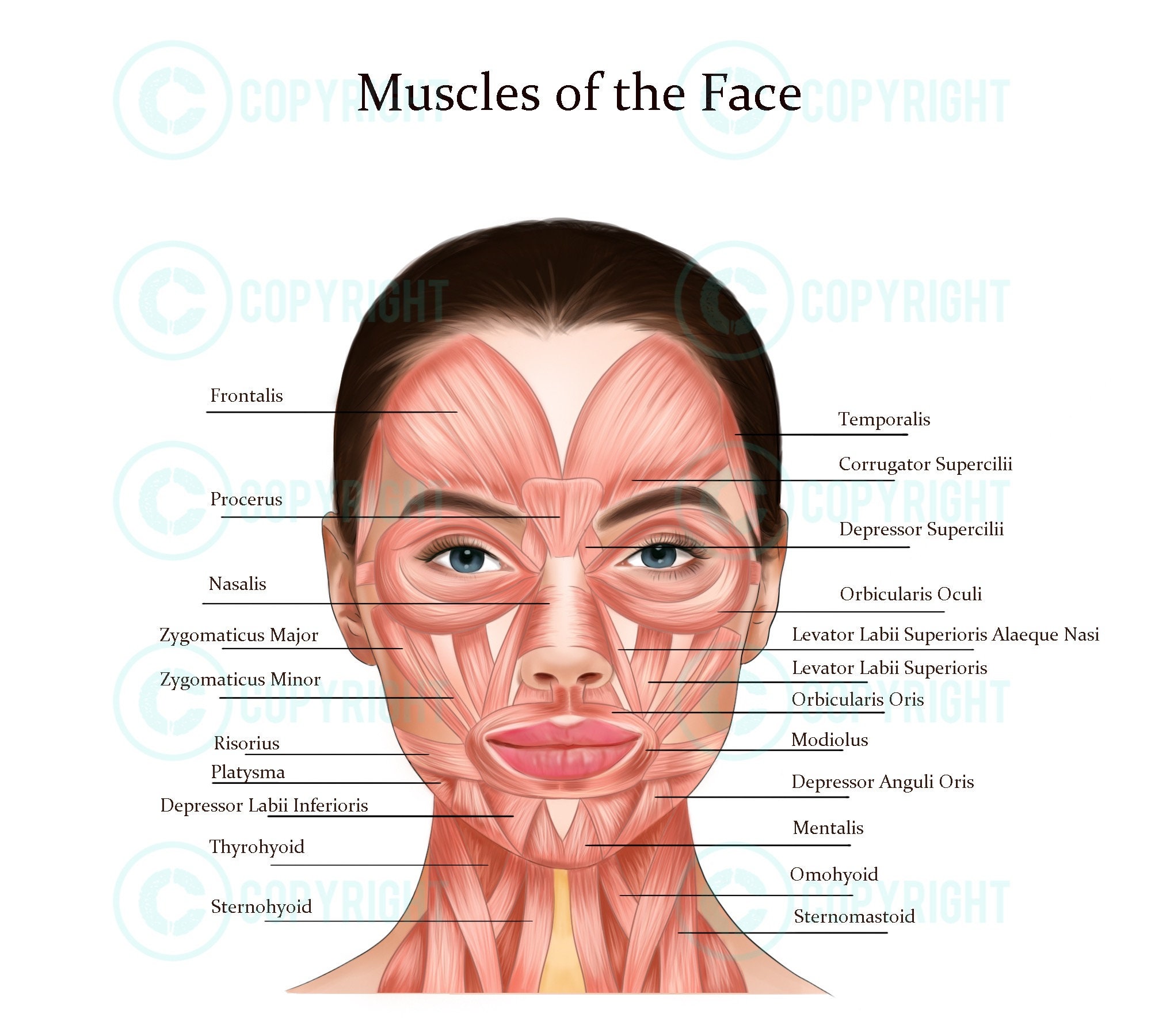Facial Muscles Diagram Biology Diagrams
BlogFacial Muscles Diagram Biology Diagrams The facial muscles (also called the muscles of facial expression) are situated within the subcutaneous tissue of the face. They are responsible for the movements of skin folds, providing different facial expressions. The facial muscles originate from the bones of the facial skeleton (viscerocranium) and insert into the skin.. These muscles are mostly grouped around the natural orifices of the The human face possesses around 30 muscles on each side, depending on how they are counted. The facial muscles are striated muscles that link the facial skin to the skull bone to perform important daily life functions, such as mastication and emotion expression. The facial muscles produce various movements but are often categorized into facial expression (mimetic) and mastication muscles. The

There are about 20 flat skeletal muscles that construct the facial structure. All of these muscles have different functions in the face. Innervated by the cranial nerve, which is the facial nerve, the muscles control all of our facial expressions. These muscles of the face can be grouped in different categories, depending on their position. Let us have a look at the 20 different muscles of our Learn about the 20 facial muscles that control your face movements, such as chewing, smiling and talking. Find out what conditions and disorders can affect the facial muscles and how to seek medical attention.

PDF Muscles of the Face Biology Diagrams
2) Occipitalis - not shown on diagram (in back): a. Actions: pulls scalp back b. Innervation: Facial Nerve (Vll) c. Origin: from posterior back of skull d. Insertion: to anteriorly with the galea aponeurotica 3) Orbicularis oculi (sphincter muscle of the eyelid): a. Actions: squinting, closes eye, crowsfeet, eye bags b. Innervation: Facial

The following interactive diagram of muscles of human facial expression is an anterior view of some of the muscles and tissues of the head (useful for Indian head massage courses). Click on the pink questions for immediate answers. The muscles / tissues listed below are included in the diagram above. (The numbers are how the muscles are

Facial muscles: Anatomy, function and clinical cases Biology Diagrams
Kenhub offers a comprehensive guide to learn the facial muscles anatomy, function and innervation. You can practice with labeled diagrams, interactive quizzes and videos.

The facial muscles are also known as the muscles of the facial expression or the mimetic muscles. These muscles are a group of approximately 20 superficial skeletal muscles of the face and scalp divided into five different groups according to their location and function. These groups include: Buccolabial (oral) group: Levator labii superioris, levator labii superioris alaeque nasi, risorius
